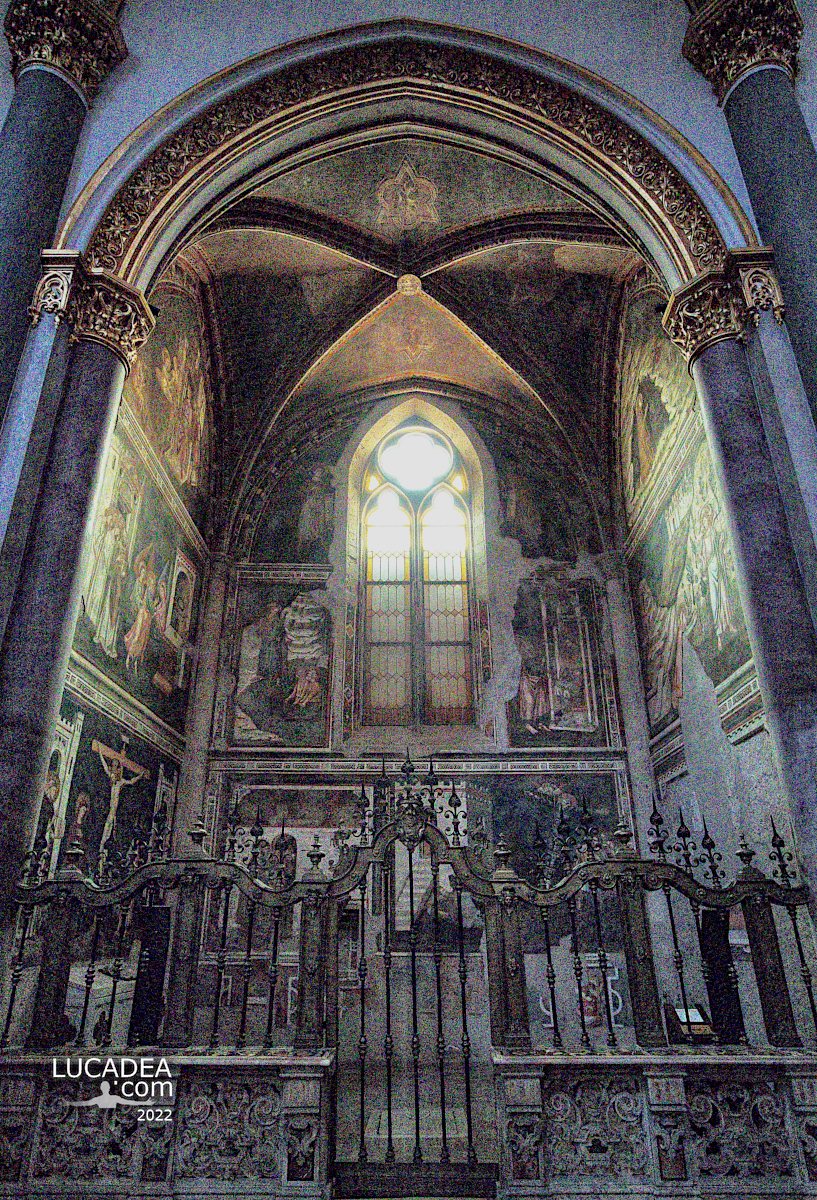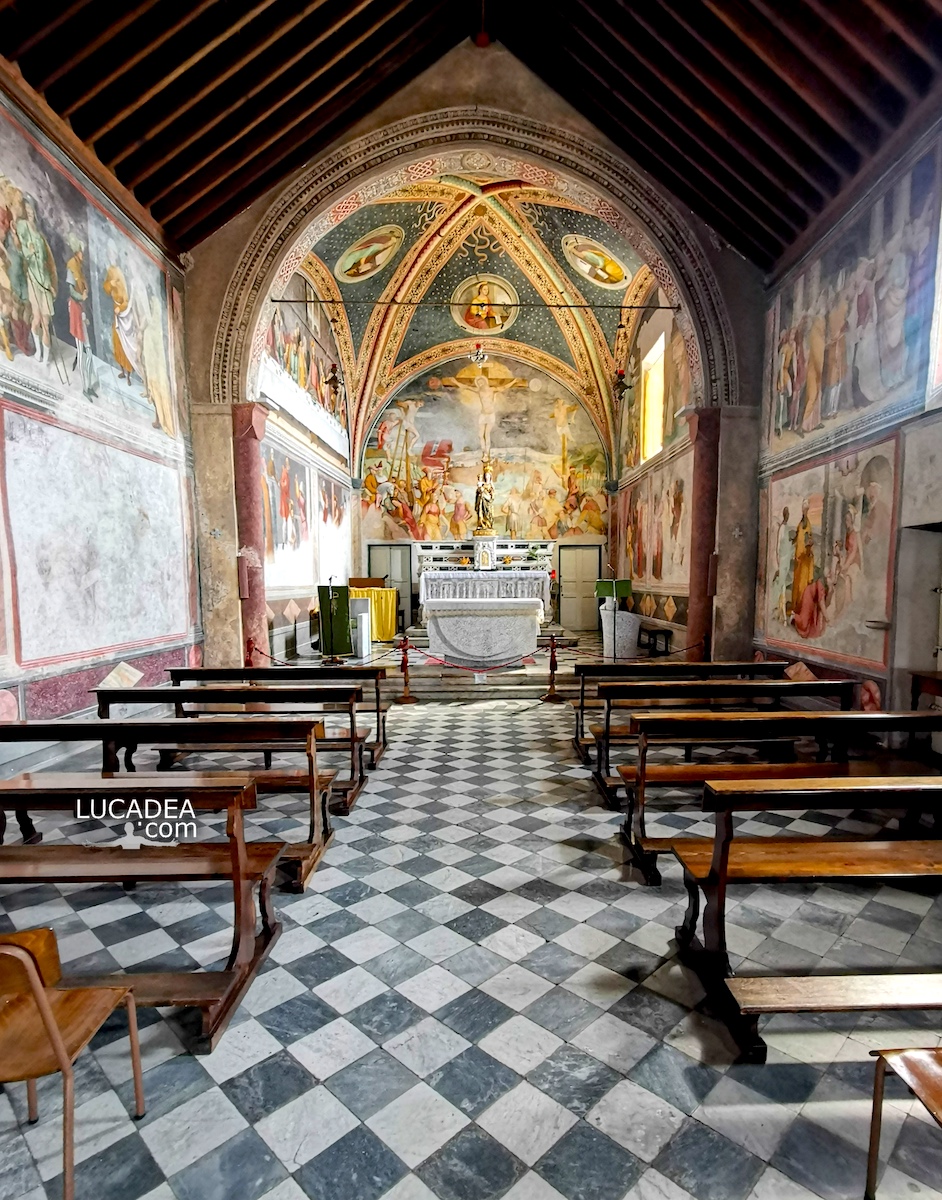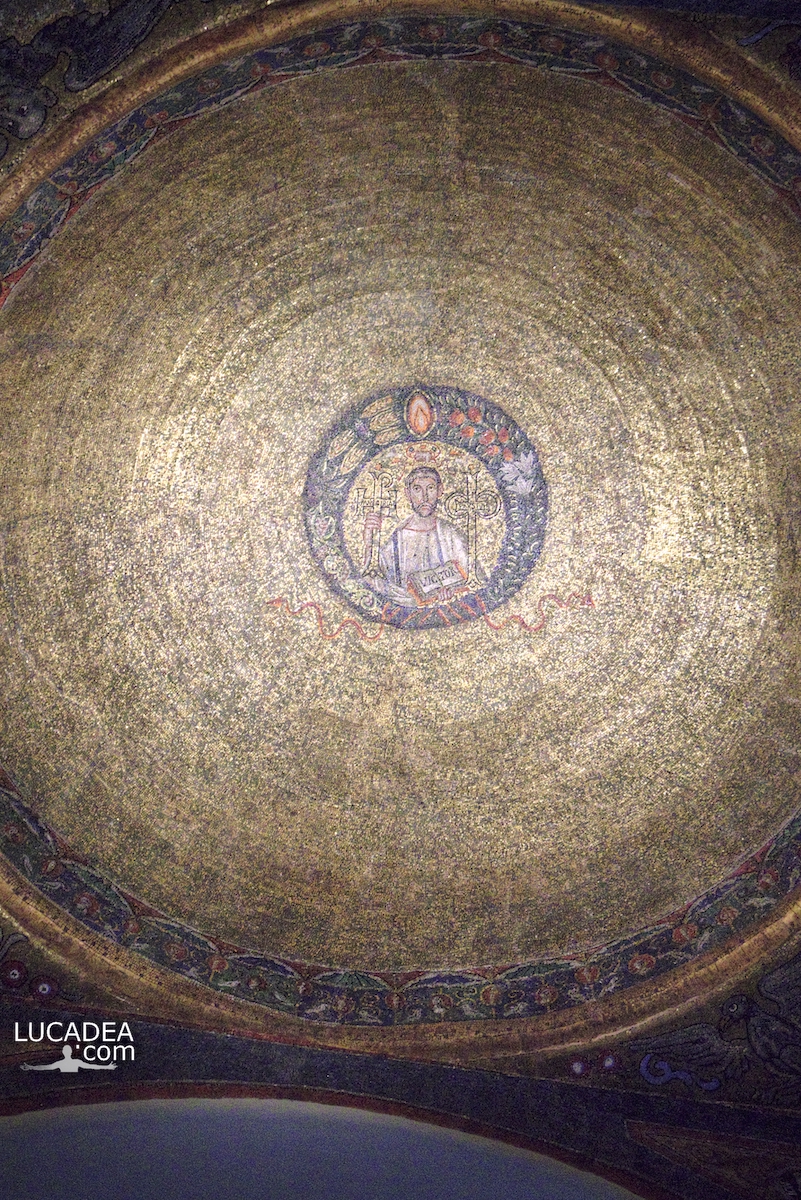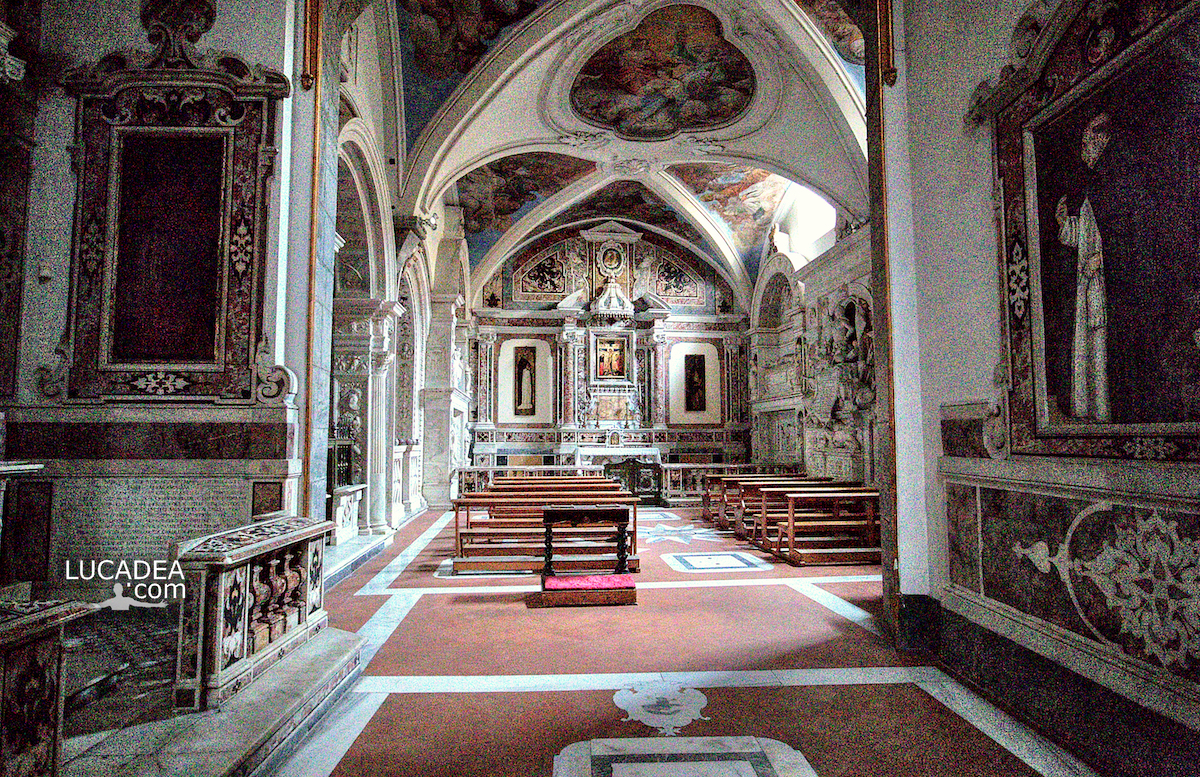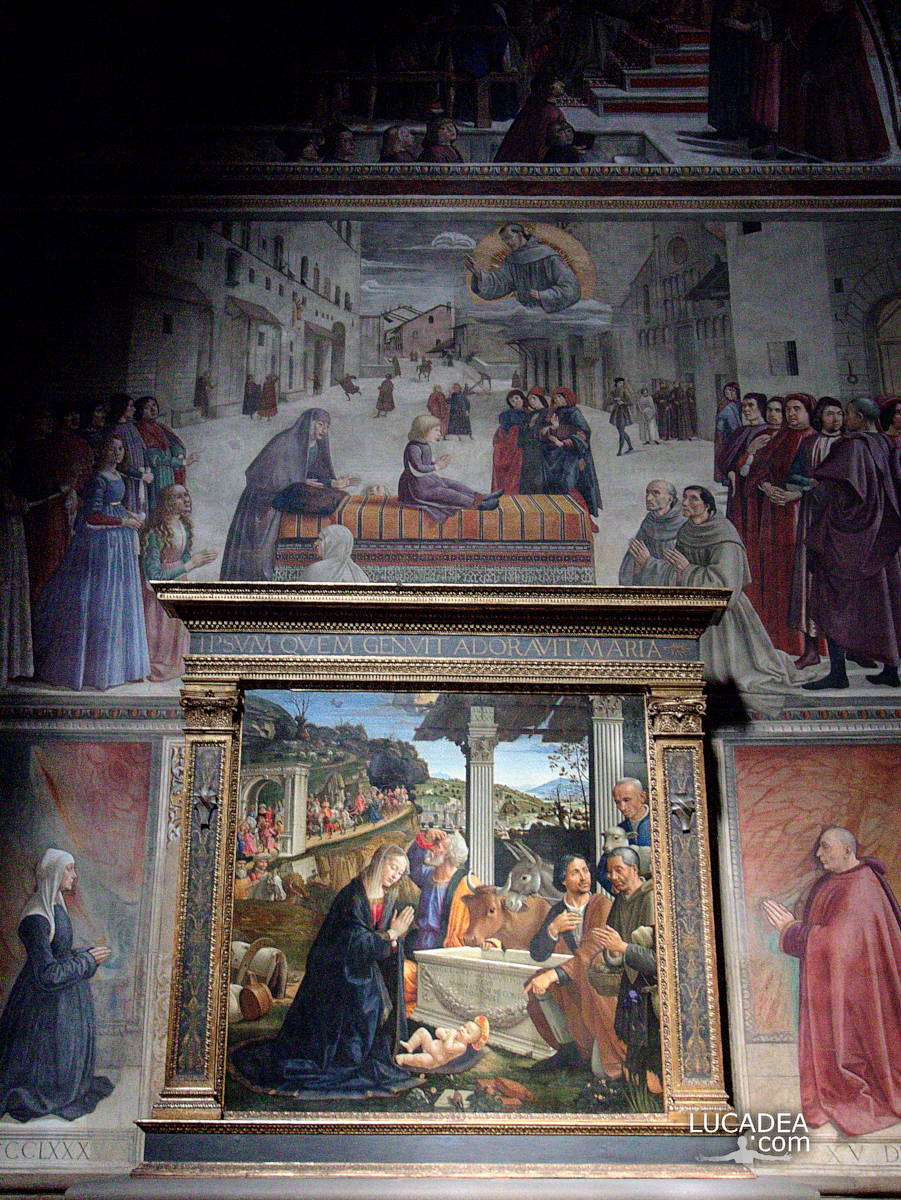The Castellani Chapel in the Basilica of Santa Croce in Florence.
The Basilica of Santa Croce in Florence, famous for being the burial place of illustrious Italian personalities, is home to several chapels of extraordinary artistic and historical value. Among these, the Castellani Chapel stands out for its rich history and cultural significance.
The Castellani Chapel takes its name from the Castellani family, one of the oldest and most influential Florentine families. Located along the right side of the main nave of the basilica, the chapel was commissioned by the family during the 14th century, a period of great prosperity for Florence. The Castellani family, known for their devotion and patronage, wanted to create a sacred space that reflected their faith and social status.
The architectural structure of the chapel follows the typical Florentine Gothic style, characterized by pointed arches and cross vaults. The walls of the chapel are enriched with frescoes and stucco decorations, which show the mastery of the artists of the time.
One of the most notable features of the Castellani Chapel is the cycle of frescoes created by Agnolo Gaddi, a famous 14th-century painter. These frescoes, which represent scenes from the life of St. John the Evangelist and the Virgin Mary, are exemplary of Florentine Gothic for their chromatic vivacity and the delicacy of the figures.
Over the centuries, the chapel has undergone various restoration interventions to preserve its works of art. One of the most significant restorations was carried out in the 19th century, when the chapel was the subject of a large recovery campaign that allowed the original beauty of the frescoes to be returned to the public.
The Castellani Chapel is not only a place of worship, but also a symbol of the rich cultural and historical heritage of Florence. It represents a tangible example of the patronage of Florentine families and their contribution to the development of art and architecture in the city.
Every year, thousands of tourists visit the Basilica of Santa Croce to admire its many chapels, including the Castellani Chapel, evidence of an era in which Florence was at the center of the Renaissance and European culture.
Do you know or have you visited this beautiful church in Florence?
Add your own comment or go to the bottom of the site to read what other visitors have written.
Photo taken with Canon EOS M100 and lens Canon EF-M 11-22.
This is the official website: santacroceopera.it.
To see all the photos of the basilica click here:

The Castellani Chapel, with a double span, was frescoed by his son Agnolo Gaddi with assistants and presents Stories of the saints Anthony the Abbot, John the Baptist, John the Evangelist and Nicholas of Bari. The tabernacle of the chapel is the work of Mino da Fiesole, while the painted cross is by Niccolò Gerini. The statues of the Robbian school represent Saint Francis and Saint Dominic, while among the tombstones, the one of Luisa Stolberg, Countess of Albany, stands out, a work in neo-Renaissance style by Luigi Giovannozzi and Emilio Santarelli based on a design by Charles Percier.
Continue and learn more on Wikipedia
The Castellani Chapel in the Basilica of Santa Croce in Florence – La chapelle Castellani dans la basilique Santa Croce de Florence – La Capilla Castellani en la Basílica de Santa Croce en Florencia – A Capela Castellani na Basílica de Santa Croce em Florença – Die Castellani-Kapelle in der Basilika Santa Croce in Florenz – Nhà nguyện Castellani trong Vương cung thánh đường Santa Croce ở Florence
The text of the post was written with the help of ChatGPT, a language model from OpenAI.












